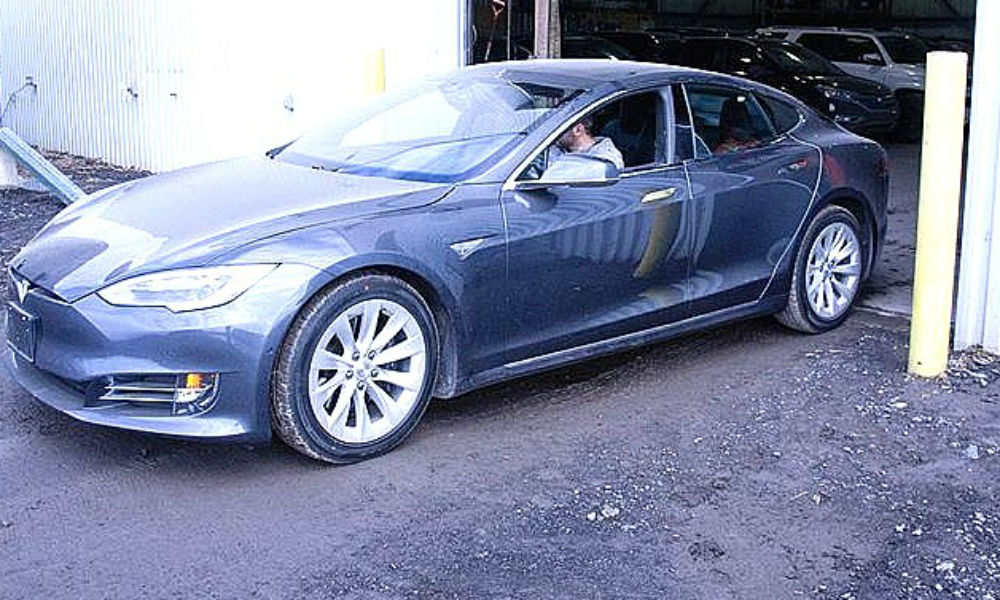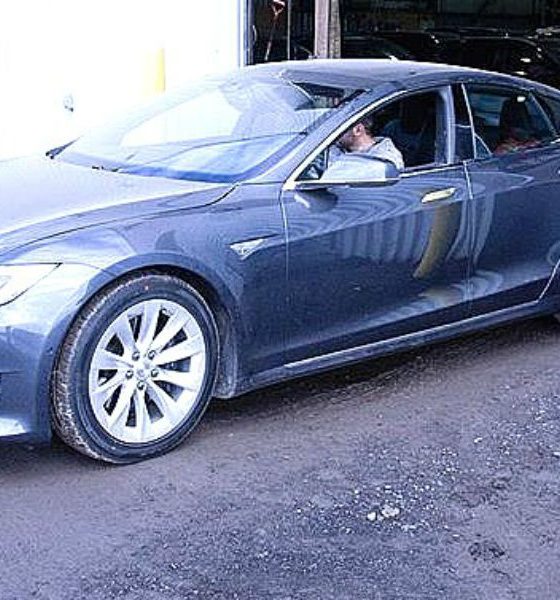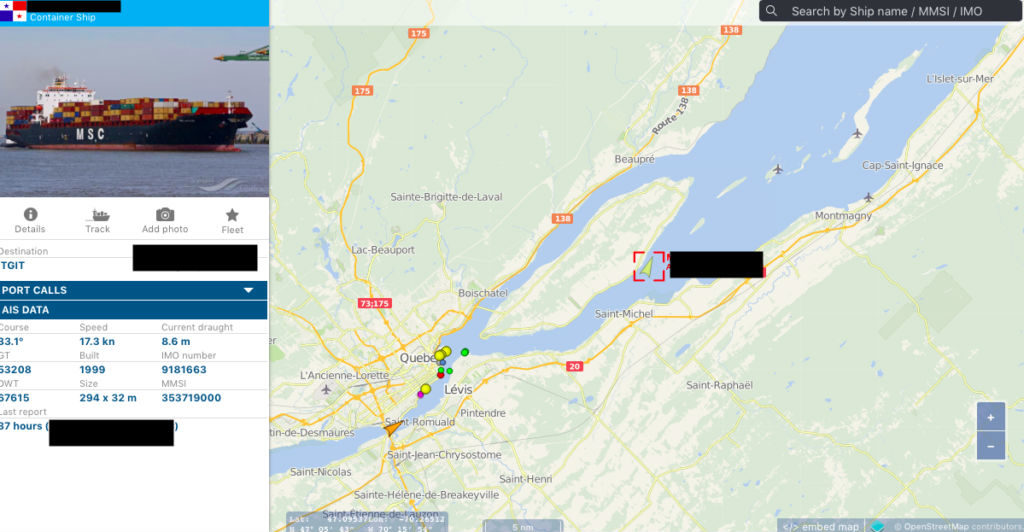

Lifestyle
Tesla Model S makes it home after dramatic transatlantic theft and rescue
When Soby of Evoto Rentals handed the key fob of one of the company’s Tesla Model S to a client that booked and paid for the electric car in advance, the businessman did not realize that it would mark the start of a long, arduous pursuit that would take the vehicle from the shipping yards of Montreal, Canada, to the shores of Italy. With its web of intrigue, near-misses, and a dramatic rescue, the story of Evoto Rentals’ stolen Model S could very well be one of the most compelling Tesla tales that has emerged to date.
A Booking Gone Wrong
It all started with a seemingly innocent booking. The client appeared to be a regular customer that merely wished to rent a Model S for a week. Everything seemed fine when the car was being booked. The deposit went through, and the entire rental fee was paid through a credit card. The customer drove off, and the electric car rental company thought that it was business as usual.
Things started to get strange. Monitoring the Model S through GPS, the businessman was a bit surprised to see the customer parking the premium electric car at a container packing company located on the outskirts of Montreal. The car stayed in the same location for 48 hours, and then the triangle representing the vehicle turned gray. With red flags all over the situation, the businessman tried emailing and calling the client, before realizing that the email address provided was a throwaway and the mobile number was from a burner phone.
The Escape
The businessman promptly reported the incident to the police, but the police explained that the circumstances were a civil matter since Evoto had rented the vehicle to the client. The police also commented that car thefts were low on their priority, so it might take a couple of months before a judge could look into the incident. Evoto Rentals would also be required to show proof that it attempted to contact the client after the rental period was over, such as physical letters sent by registered mail to the customer’s address.
The businessman opted to ring up the company’s lawyer and Tesla, both of whom advised against waiting as the vehicle could be shipped overseas. The electric car rental company hired a private investigator to scout the last known location of the vehicle, who was able to get some information about the nature of the cargo packing firm’s activities. Thanks to some help from Evoto’s lawyer, a search warrant from the police was secured, and the packing company’s site was searched.

The packing company claimed innocence, arguing that they believed the Tesla Model S was just another second-hand vehicle that was being shipped overseas. The company even provided camera footage to show the person who drove the electric car to the location. The contact information to the shipping company that was tasked to take the vehicles abroad was given as well. The shipping company was immediately called, but not long into the conversation, the businessman’s heart sank. The container that had Evoto’s Model S had just sailed towards the Middle East, and the vehicle was already in international waters.
The Rescue
With the pursuit of the Model S now extending far beyond Montreal, the EV rental company coordinated with the authorities to get INTERPOL involved. The ship was expected to have a layover in Italy, which presented an opportunity to retrieve the Tesla. This required some more paperwork to get the right authorities involved, as Evoto had to ask local police to make a request to the Royal Canadian Mounted Police (RCMP), who in turn created a request to INTERPOL, who, in turn, notified the Italian police to seize the ship when it arrived in the country. In a stroke of luck for Evoto, INTERPOL and the Italian police worked quickly, getting everything ready within a week.
The operation was a success, and the container carrying the stolen Model S was retrieved. As it turned out, the thieves cleverly declared that the container was filled with scrap metal so as not to arouse suspicion. When authorities opened the container, they did find scrap metal inside. But also inside the container was Evoto Rentals’ Tesla Model S, caked in dust, but miraculously undamaged from its harrowing ordeal.
Coming home
After more paperwork from the electric car rental company, the Tesla Model S was finally shipped home to Canada. Not including legal fees, Evoto ended up spending about US$21,000 to get their electric car back from Italy. Fortunately, most of the costs were covered by insurance. The stolen Model S finally made it home recently, where it was welcomed by the Evoto Rentals team.
While the theft of the vehicle was an emotionally draining ordeal, the businessman was nonetheless grateful for the help that Evoto received which made it possible to retrieve the stolen electric car. The EV rental company also gave particular thanks to Tesla for the electric car maker’s help, as well as the Model S’ technologies that made it easy to trace the vehicle’s location even after it left Montreal. The businessman learned a lesson too, as Evoto Rentals now conducts background checks for its clients before handing over a vehicle. A second GPS tracking system has also been installed on the company’s fleet of Model S, Model X, and Model 3.
Teslas are among the most challenging vehicles to steal. Fank Scafidi, director of public affairs at the National Insurance Crime Bureau, which crunched data from the Federal Bureau of Investigation’s National Crime Information Center, noted that 112 out of 115 stolen Teslas have been recovered from 2011 to May of 2018. “That’s about as good as it gets. I’m wondering if the thieves’ intellect might have been overwhelmed just sitting in a Tesla, much less figuring out how to operate it for any length of time,” he said. Apart from their tech, Teslas also have a suite of security features, including those that are introduced through a software update, such as Sentry Mode.

Lifestyle
Tesla Model S Plaid battles China’s 1500 hp monster Nurburgring monster, with surprising results
There is just something about Tesla’s tuning and refinement that makes raw specs seem not as game-changing.

The Tesla Model S Plaid has been around for some time. Today, it is no longer the world’s quickest four-door electric sedan, nor is it the most powerful. As per a recent video from motoring YouTube channel Carwow, however, it seems like the Model S Plaid is still more than a match for some of its newer and more powerful rivals.
The monster from China
The Xiaomi SU7 Ultra is nothing short of a monster. Just like the Model S Plaid, it features three motors. It also has 1,548 hp and 1,770 Nm of torque. It’s All Wheel Drive and weighs a hefty 2,360 kg. The vehicle, which costs just about the equivalent of £55,000, has been recorded setting an insane 7:04.957 at the Nurburgring, surpassing the previous record held by the Porsche Taycan Turbo GT.
For all intents and purposes, the Model S Plaid looked outgunned in Carwow’s test. The Model S Plaid is no slouch with its three motors that produce 1,020 hp and 1,420 Nm of torque. It’s also a bit lighter at 2,190 kg despite its larger size. However, as the Carwow host pointed out, the Model S Plaid holds a 7:25.231 record in the Nurburgring. Compared to the Xiaomi SU7 Ultra’s record, the Model S Plaid’s lap time is notably slower.
Real-world tests
As could be seen in Carwow’s drag races, however, Tesla’s tech wizardry with the Model S Plaid is still hard to beat. The two vehicles competed in nine races, and the older Model S Plaid actually beat its newer, more powerful counterpart from China several times. At one point in the race, the Xiaomi SU7 Ultra hit its power limit due to its battery’s temperature, but the Model S Plaid was still going strong.
The Model S Plaid was first teased five years ago, in September 2020 during Tesla’s Battery Day. Since then, cars like the Lucid Air Sapphire and the Xiaomi SU7 Ultra have been released, surpassing its specs. But just like the Model Y ended up being the better all-rounder compared to the BYD Sealion 7 and the MG IM6, there is just something about Tesla’s tuning and refinement that makes raw specs seem not as game-changing.
Check out Carwow’s Model S Plaid vs Xiaomi SU7 drag race video below.
Lifestyle
500-mile test proves why Tesla Model Y still humiliates rivals in Europe
On paper, the BYD Sealion 7 and MG IM6 promised standout capabilities against the Model Y.

BYD is seeing a lot of momentum in Europe, so much so that mainstream media has taken every opportunity to argue that the Chinese automaker has beaten Tesla in the region. But while BYD sales this year in Europe are rising and Tesla’s registrations remain challenged, the raw capabilities of vehicles like the Model Y are difficult to deny.
This was highlighted in a 500-mile challenge by What Car? magazine, which showed that the new Tesla Model Y is more efficient, cheaper to run, and more reliable than rivals like the BYD Sealion 7, and even the nearly 400 KW-charging MG IM6.
Range and charging promises
On paper, the BYD Sealion 7 and MG IM6 promised standout capabilities against the Model Y. The Sealion 7 had more estimated range and the IM6 promised significantly faster charging. When faced with real-world conditions, however, it was still the Model Y that proved superior.
During the 500-mile test, the BYD nearly failed to reach a charging stop, arriving with less range than its display projected, as noted in a CarUp report. MG fared better, but its charging speeds never reached its promised nearly-400 kW charging speed. Tesla’s Model Y, by comparison, managed energy calculations precisely and arrived at each stop without issue.
Tesla leads in areas that matter
Charging times from 25% to 80% showed that the MG was the fastest at 17 minutes, while Tesla and BYD were close at 28 and 29 minutes, respectively. Overall efficiency and cost told a different story, however. The Model Y consumed 19.4 kWh per 100 km, compared to 22.2 for MG and 23.9 for BYD. Over the full trip, Tesla’s charging costs totaled just £82 thanks to its supercharger network, far below BYD’s £130 and MG’s £119.
What Car? Magazine’s testers concluded that despite BYD’s rapid sales growth and the MG IM6’s seriously impressive charging speeds, Tesla remains the more compelling real-world choice. The Model Y just offers stability, efficiency, and a proven charging infrastructure through its Supercharging network. And as per the magazine’s hosts, the Model Y is even the cheapest car to own among the three that were tested.
Watch What Car? Magazine’s 500-mile test in the video below.
Lifestyle
Tesla Cybertruck slapped with world’s least intimidating ticket, and it’s pure cringe
One cannot help but cringe and feel second-hand embarrassment at the idea of a person just driving around with a stack of these babies.

A Cybertruck parked at Stanford Shopping Center in California was recently hit with what might be the most try-hard piece of paper ever slipped under a wiper blade: a “fake citation” accusing the driver of supporting a “fascist car.”
The note, shared on X by Tesla staff program manager Ryan Torres, quickly made the rounds on X, where it quickly gained attention as an example of how not to protest.
The world’s least intimidating ticket
According to the citation, the supposed “violation” was “driving a fascist car.” The remedial action? Take the bus, call an Uber, or ride a bike. The note also dubbed Elon Musk a “chainsaw-wielding Nazi billionaire.” Now, protests against Tesla and Elon Musk have become commonplace this year, but one cannot help but cringe and feel second-hand embarrassment at the idea of a person just driving around with a stack of fake anti-Tesla/Musk citations.
Torres pointed out the irony himself in his post on X. Tesla currently employs over 140,000 Americans, and SpaceX has put the U.S. firmly back at the top of space technology. As Torres put it, maybe the person behind the world’s least intimidating ticket should “read a book on innovation before vandalizing” other people’s property.
Peak performative clownery
Not to mention that the fake ticket’s logic collapses under its own weight. EVs like the Cybertruck are literally designed to reduce emissions, not “destroy the economy.” If anything, Tesla has bolstered the United States’ economy by fueling jobs in engineering, manufacturing, and clean energy. It’s not the first time a Tesla has been the target of vandalism or politically charged notes, but this one stands out for sheer cringe value.
Torres summed it up neatly: “Peak clownery.” On that point, at least, the citation earns full marks. In a way, though, perhaps cringe fake tickets are not as bad as the literal firebombs that were being thrown at Tesla stores and cars earlier this year because some critics were gleefully misinformed about Elon Musk.








